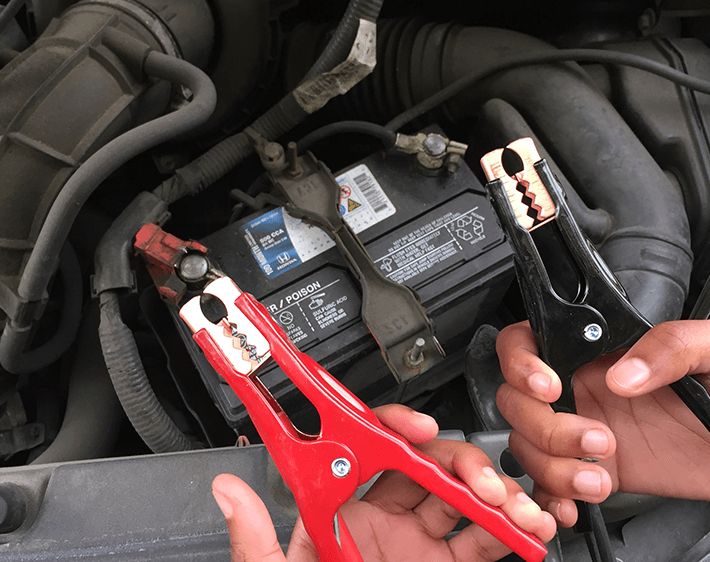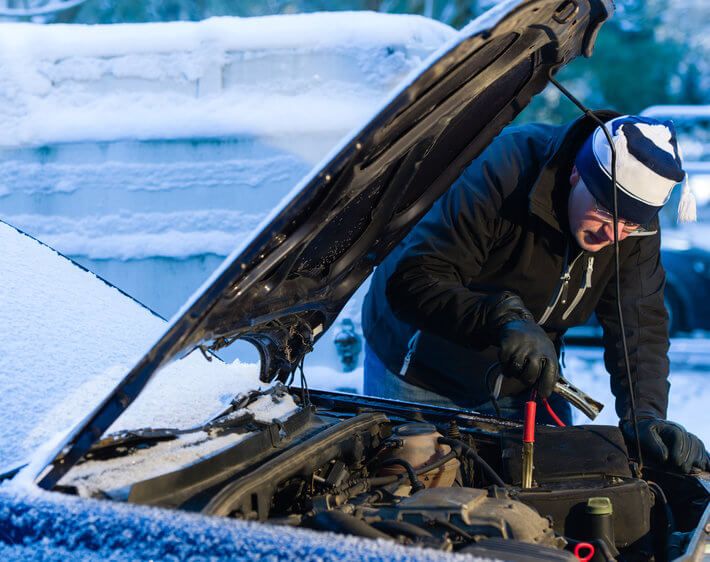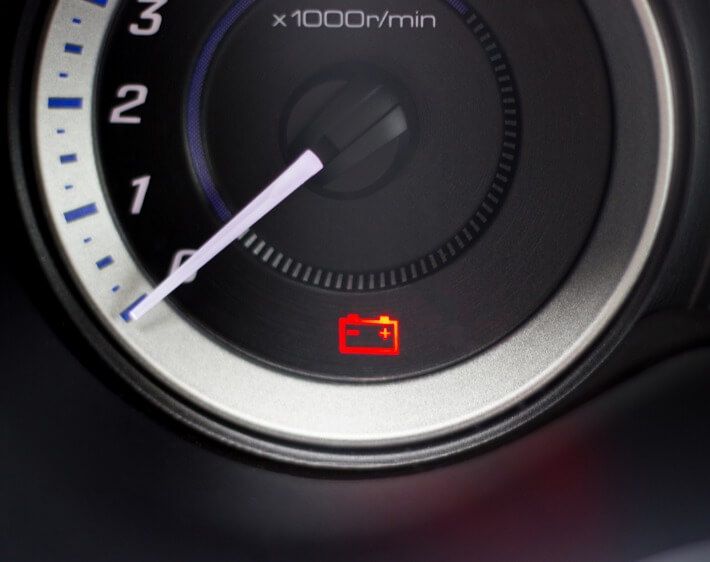Finding yourself with a dead car battery can feel stressful, especially if you're in a hurry. Fortunately, learning how to start a car with jumper cables is a relatively straightforward process. All you need is the right tools and a little know-how.
This guide will walk you through each step to safely and effectively jump-start a dead car battery, whether you have another vehicle on hand or not.
Get powered up with these must-haves:
Owner's manual
Always start with your car owner's manual. It may contain specific instructions for jump-starting your particular vehicle, especially if the battery is located in an unusual spot or if your car battery voltage is unique to the standard 12-volt system.
Jumper cables
You should always keep a handy pair of jumper cables in your car. If you don't already have them, look for a set that's 10-20 feet long. While longer cables can reach farther, you risk losing power as the energy travels along the extra length. Thicker cables, however, are ideal for a stronger connection; the lower the gauge number, the thicker the cable. You'll also want to ensure the cables you use are not rusted, frayed, or damaged.
A car with a working battery
Unless you've got a portable jump starter on hand, you'll need another car to juice up your battery. However, it must be the same voltage as the car being jumped. Most automotive electrical systems are 12-volt systems; however, some vehicles may have a different voltage. If you own a more unique vehicle, such as an EV, hybrid, diesel truck, or RV, consult your owner's manual before getting or giving a jump.
A portable jump starter
If you're interested in learning how to jumpstart a dead battery without another car, a portable jumpstarter is a great place to start. This option allows you to start your vehicle quickly and safely without roadside assistance or asking a passerby for help.
Protective gloves and eye protection
Ensuring that your hands and eyes are safe during this process is always a good idea. When working with batteries, these can protect you from sparks or battery acid. You should also remove any jewelry from your hands, even when wearing protective gloves.
Battery terminal cleaning supplies
This one is optional but useful if your battery terminals are dirty or corroded. Before learning how to connect jumper cables, wipe the terminals clean to allow for an optimal jump. You'll need protective gloves, baking soda, water, an old toothbrush, a rag, and petroleum jelly.
For step-by-step instructions on how to clean your battery terminals, check out our guide, "How to Clean Battery Terminals with Stuff You Already Have."
How to Jump-Start a Car with Another Vehicle
- Get all materials out and ready: Clean off your terminals if they're dirty, and make sure any little ones are out of the way. It's also useful to unplug any unnecessary devices from your vehicle, such as a phone charger.
- Park both cars safely: Bring the working vehicle close to the one with the dead battery. Shut off the ignition in both vehicles and ensure that the parking brakes are engaged. The two cars should be close enough that the jumper cables can reach between them without stretching too tightly.
- Attach the jumper cables: Before you get started, learning where to connect jumper cables on a battery is essential. Follow these steps carefully:
- Start by connecting the red clamp to the positive terminal (+) of the good battery. The terminal may say “POS” or “+” to help you identify it.
- Connect the other red clamp to the positive terminal (+) of the dead battery.
- Next, attach the black clamp to the negative terminal (-) of the dead battery. It may be labeled “NEG” or “-”.
- Finally, attach the other black clamp to an unpainted metal surface on the engine block of the good car, away from the battery. This will ground the circuit and prevent sparking.
- Start the working car: Let it run for a few minutes to give the dead battery some charge. The more “dead” your battery is, the longer you may need to run the working vehicle.
- Attempt to start the dead car: After a few minutes, try turning the key in the car with the dead battery to start the engine. If it doesn't start right away, check the connections and wait a few more minutes, allowing more time for the battery to charge.
- Remove the cables in reverse order: Once the jumped car is up and running, it's time to disconnect the jumper cables.
- First, remove the black clamp from the engine block of the good car.
- Then, remove the black clamp from the bad battery.
- Next, remove the red clamp from the positive terminal of the bad battery.
- Lastly, remove the red clamp from the good car's positive terminal.
- Keep the jumped car running: If the dead battery was likely a one-time event due to lights being left on (or something similar), let the engine run for at least 20-30 minutes to give the alternator time to recharge the battery. If possible, consider taking the car for a drive rather than letting it idle. However, if this issue occurs often or your car stalls or struggles to stay running, you may need more than just a jump start. Repair or further diagnostics may be necessary. Consider driving your vehicle to your nearest Firestone location before shutting the engine off.
How to Jump-Start a Battery Without Another Vehicle
If another vehicle isn't available, a portable jump starter is a great tool to have on hand. The process is very similar:
- Connect the jump starter: Attach the red clamp to the positive terminal (+) of the dead battery and the black clamp to an unpainted metal surface, just as you would with another vehicle.
- Turn on the jump starter: Follow the manufacturer's instructions for your specific device.
- Start the car: Once the jump starter is connected and turned on, try starting the car. If it starts, let it run for 20-30 minutes to recharge the battery. Disconnect the jump starter in the same order you connected it, starting with the black clamp.
If the Issue Persists…
If your battery refuses to hold a charge after being jump-started, there could be a deeper issue at play:
- Battery age: Car batteries usually last around 3-5 years. If your battery is older, it may not hold a charge anymore.
- Corroded terminals: Check for corrosion around the battery terminals, as it can prevent the battery from receiving or holding a charge.
- Faulty alternator: The alternator is responsible for charging your battery while driving. If it's failing, your battery will keep draining.
- Parasitic drain: Electrical components like interior lights or a faulty relay can drain your battery when the car is off.
If your car won't start the next time you take it for a spin, you may have a battery problem. Stop by your local Firestone Complete Auto Care for a free battery check! Our team can determine if your battery needs to be replaced or if there's a larger issue, like an alternator problem. And if you're in the market for a new battery, compare car batteries online, and check out our special online pricing.
Don't let a dead battery leave you stranded—let Firestone Complete Auto Care take care of it!


